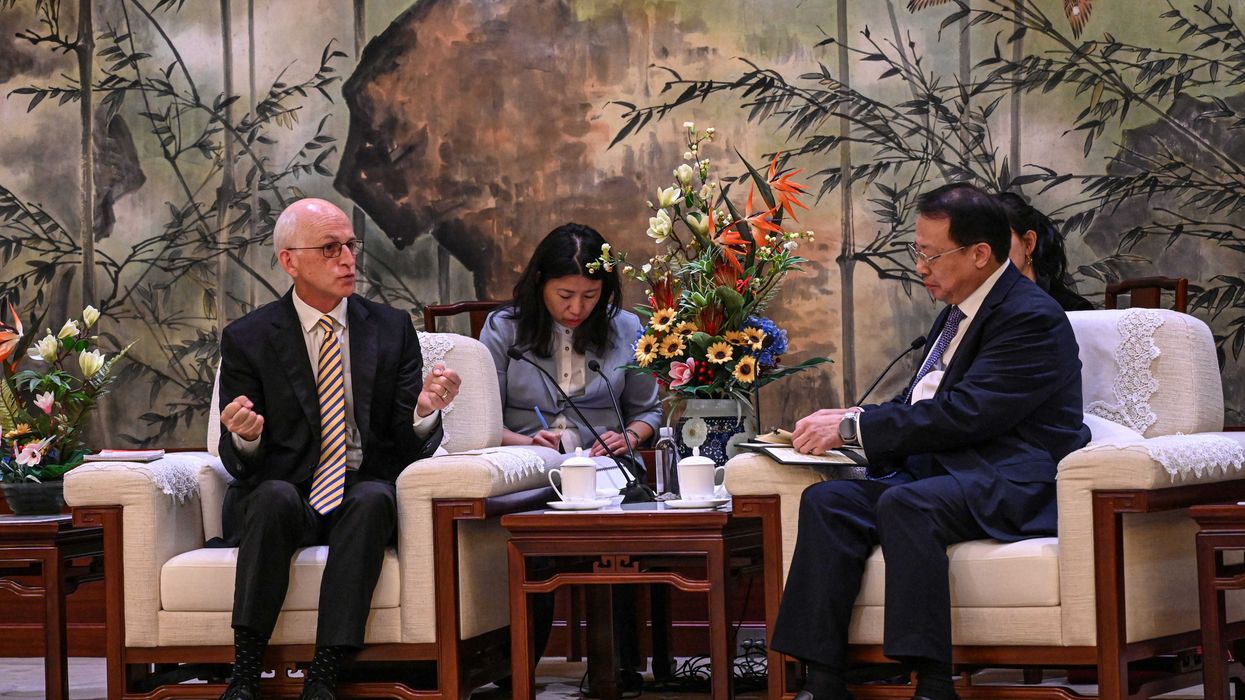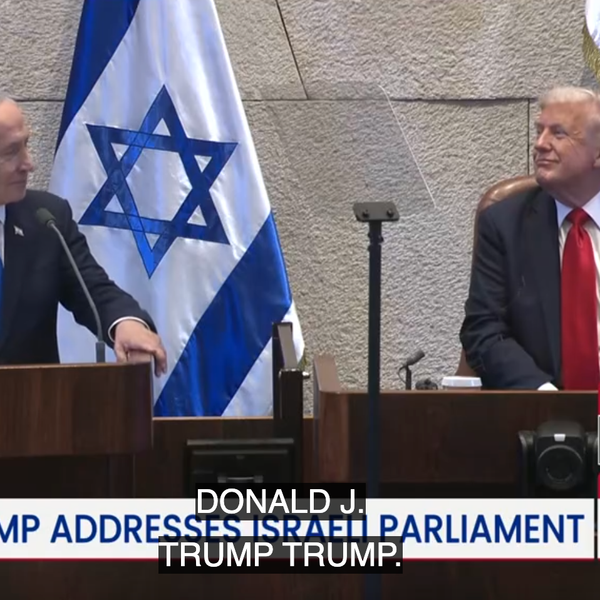The Bunker appears originally at the Project on Government Oversight and is republished here with permission.
'Those who forget the past…'
The Bunker watched the Soviet Union’s Sputnik — the first human-made object to orbit the Earth — fly over his Connecticut house in 1957, and grew up witnessing the resulting “space race” (only one nation has landed people on the Moon. It wasn’t the Soviets). It also soon led to U.S. claims of a “missile gap” — Moscow supposedly had more of them than Washington — that turned out to be false. In the 1960s, The Bunker played near a shuttered missile base, built to destroy incoming Soviet bombers. That Nike system was fully abandoned as folly in the 1970s, when the U.S. military built its first missile-defense system in North Dakota. The Bunker walked the Safeguard site years later, eyeballing its strange 123-foot tall pyramid with sprinklers to wipe radiation from its four Cyclops-like radar eyes. It operated for less than a year before it became worthless against a growing Soviet missile force. Then, in 1983 — and more than $400 billion ago — The Bunker covered Ronald Reagan’s call (PDF) to build a Strategic Defense Initiative to render Soviet nuclear warheads “impotent and obsolete.” Quickly dubbed “Star Wars,” it too withered away, into the weak web of 44 ground-based interceptor missiles based in Alaska and California today capable of “defending” us against a limited attack.
But no matter. On January 27, President Donald Trump declared the Pentagon will build “a next-generation missile defense shield” to “deter — and defend its citizens and critical infrastructure against — any foreign aerial attack on the Homeland.” The president told the Defense Department that it had 60 days to propose “The Iron Dome for America” to defend the U.S. against “ballistic, hypersonic, advanced cruise missiles, and other next-generation aerial attacks from peer, near-peer, and rogue adversaries.”
Trump’s executive order is more marketing hype than a plausible military assignment. As if there were any doubt, the Pentagon reached out to industry (PDF) four days after Trump’s announcement, seeking “to understand Industry capabilities to address Executive Order `The Iron Dome for America’” (like U.S. defense contractors are not perpetually hyping what they can do, and have been secretly hoarding missile-defense silver bullets).
It's ambitious, aspirational — and a pipe dream. Such a Mission Impossible might make more sense if the U.S. military could keep one of its helicopters from colliding with a commercial airliner just down the Potomac River from its headquarters and the White House. Keeping two aircraft from colliding is a piece of cake compared to developing and deploying space and ground-based sensors and weapons able to detect, track, and destroy multiple incoming enemy missiles launched at the same time.
“The Iron Dome for America” echoes the much more modest Iron Dome system used by Israel to fend off fewer, slower, and shorter-ranged rockets and missiles. The president’s marching orders constitute a wish list lacking logic — or the money to pay for it (nuclear expert Joe Cirincione’s back-of-the-envelope estimate for it is $2.5 trillion). The U.S. currently spends about $10 billion annually on missile defense.
Unsurprisingly, defense contractors like what they’re hearing. “We’re a major partner in Israel’s Iron Dome today,” Chris Calio, chief executive of RTX, parent of Raytheon, said the day after Trump’s order. “It's the bedrock of Raytheon” — the Pentagon’s second-biggest contractor — “and they are among the best at it…we view this as a significant opportunity for us, something right in our wheelhouse.”
And something right in the taxpayers’ poorhouse.
A new rank rank: Commander-in-Chief Petty Officer
Much of President Trump’s push for missile defense, like those of his predecessors, is designed to thwart an attack by the Russians. Yet he’s emulating them when it comes to “defacing” those who have displeased him, eerily calling to mind Josef Stalin. Such imitation among autocrats apparently is the sincerest form of battery.
The Trump administration has removed two Pentagon portraits of retired Army general Mark Milley — picked by Trump to serve as his chairman of the Joint Chiefs in 2018 — because Milley placed his allegiance to the Constitution above his loyalty to Trump. Beyond that, Trump and his minions have stripped security details and clearances from Milley and several other former top U.S. officials who didn’t toe Trump’s line. They needed protection from Iran after — who else? — Trump ordered the killing of Iranian Major General Qassim Suleimani in 2020.
Senator Jack Reed of Rhode Island, the senior Democrat on the armed services committee, denounced Trump for jeopardizing Milley’s life for his own “political satisfaction.” Even Senator Tom Cotton (R-AR), a Trump acolyte and chairman of the intelligence committee, encouraged Trump to “revisit” his decision. Stripping security from Milley and others who have run afoul of Trump means they “could be targeted by Iranian assassins in public where innocent bystanders could be injured,” Cotton warned.
The Bunker turns five today…
It’s hard to believe that we launched The Bunker five years ago today. That’s a lifetime in Newsletter Land. The Bunker remains a proud skeptic, standing athwart all the zaniness that is U.S. national security, declaring: “Are you kidding me?”
The Bunker’s proud parents are Tim Farnsworth, vice president of communications and editorial strategy here at the Project On Government Oversight (POGO), and Mandy Smithberger, who was running POGO’s Center for Defense Information when The Bunker launched. Since then, we’ve had a capable team working behind the scenes to produce and publish The Bunker nearly every Wednesday morning (subscribe here for weekly 7 a.m. delivery via email). They include current CDI chief Greg Williams, Editorial Director Julia Delacroix, producers Jules Lemos-Maldonado and Spurthi Kontham, and ace proofreader/fact-checker Neil “Eagle Eye” Gordon. And three huzzahs to POGO chief Danielle Brian, who recently pushed to get The Bunker co-published on Responsible Statecraft’s website.
This note is just a helmet tip from The Bunker-in-chief to thank this crackerjack crew for a job well done. And a hearty Bravo Zulu to our valued readers. With five years now solidly behind us, The Bunker can’t wait to begin its sixth year. Finally, we’ll be able to start kindergarten.
Here’s what has caught The Bunker’s eye recently
The Chinese military would be unlikely to win a war with the U.S., according to experts from the usually hawkish RAND Corporation, quoted by David Roza in the usually hawkish Air & Space Forces Magazine January 31.
→ Military pay (PDF)
The median enlisted person in the U.S. military (average age 22) earned $115,400 in total compensation, including benefits, in 2024; median officers (average age 28) earned $184,600, the Congressional Budget Office reported January 30.
A review of posts on X by top incoming Trump Defense Department officials highlights their disdain for the status quo and a willingness to upset the Pentagon apple cart, Noah Robertson reported January 28 at Defense News.
Thanks for reviewing The Bunker this week. Consider forwarding this on to your pals so they can subscribe here.
- Star Wars reruns | Responsible Statecraft ›
- Saying the quiet part out loud: All that glitters is not 'Golden Dome' | Responsible Statecraft ›
- Looming Indian Ocean showdown | Responsible Statecraft ›
- From barracks to battleships, cost control is MIA | Responsible Statecraft ›
- When is a trillion not a trillion? | Responsible Statecraft ›















